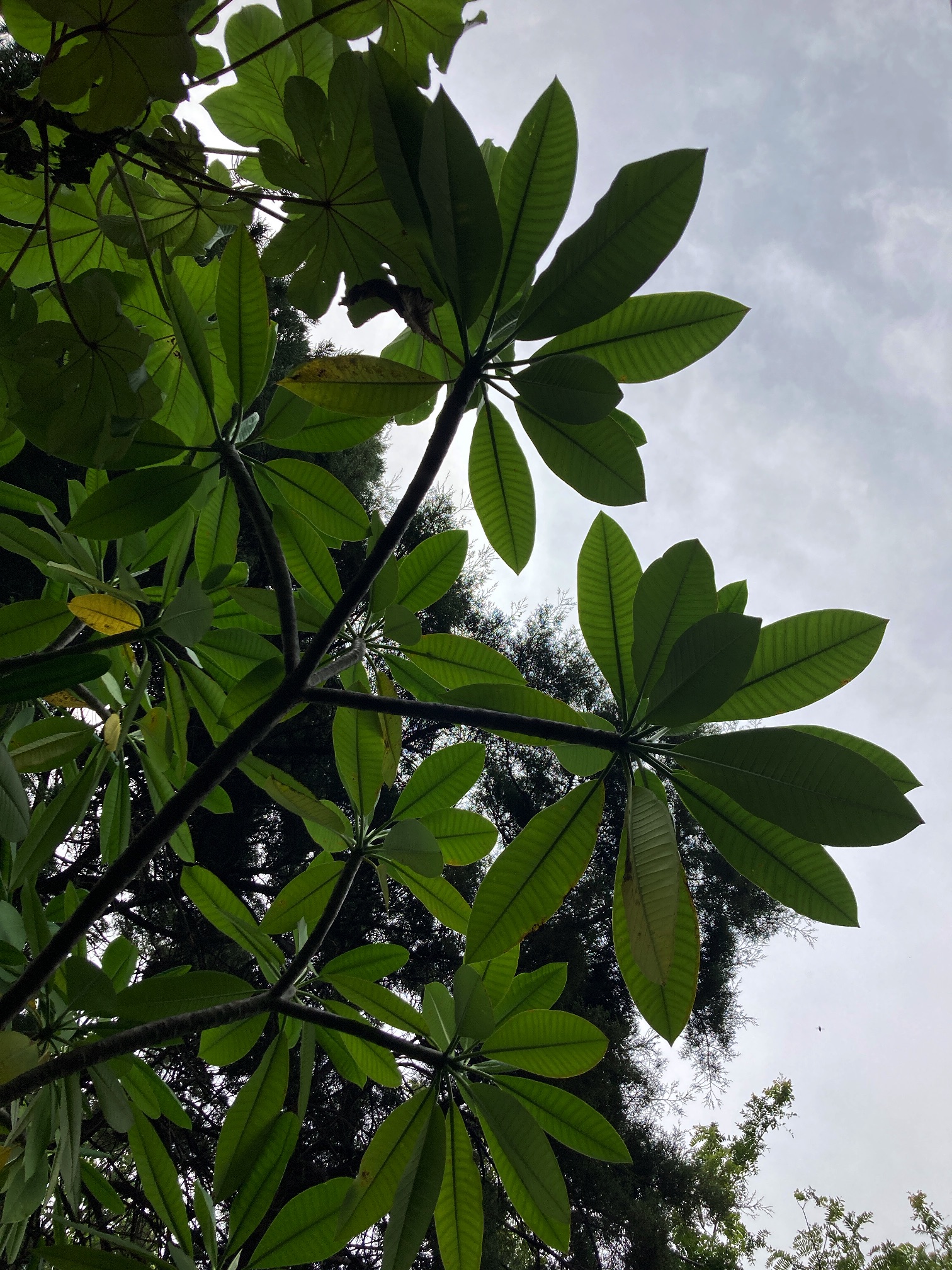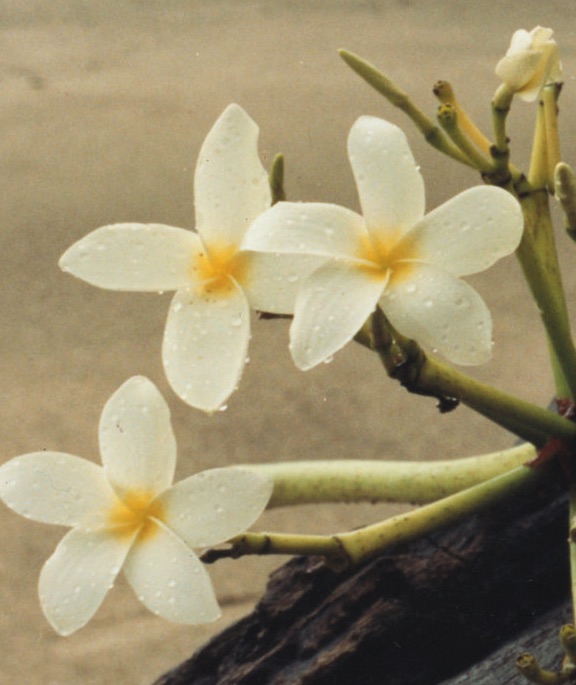Plumeria rubra L.
Apocynaceae
Flor Blanca, Frangipani, Nosejoy

Canopy tree (5-10m) that frequents well insolated, dry sites with shallow soils, like those found along south-facing slopes and rocky cliffs. This species is best known for its showy, white flowers – often used in the fabrication of Hawaiian leis.
Description: Flor Blanca trees have fluted, irregular trunks (20cm) that are covered in flaky, brown-grey bark. Simple and alternate, its large, elliptical leaves (45cm x 15cm) appear clustered at the ends of thick, cylindrical twigs, while the rest of the branches remain free of foliage. As is typical of the Apocynaceae pant family, the twigs and leaves of this species exude copious quantities of thick, white sap when broken.
The large flowers (5cm across) appear in terminal panicles. Each blossom unfurls its 5 overlapping petals from a lance-shaped, twisted, tubular bud, revealing a crème-colored flower with a yellow center. These structures may appear at any time during the year but are most abundant during the dry months from January to April.
The curved, glossy-green fruits (20cm long, 3cm wide) develop as paired, horn-shaped, dehiscent capsules. Each capsule, when dry, splits along a longitudinal seam and releases many winged seeds.
Similar Species: Flor Blanca’s preference for xeric sites, and its large, thick, elliptical leaves clustered along branch tips are unique to this species and make it hard to confuse with other trees of pacific slope.
Natural History: Plumeria flowers have a strong, fragrant scent designed to attract pollinators, but they do not produce nectar. A probable example of mimicry, the tree achieves pollination thanks to the visits of hawkmoths that do drink the nectar of other, similar flowers that they frequent. In this way, Plumeria trees would receive the benefit of cross-pollination without expending the energy that would be required to generate the nectar “reward” that the hawkmoths are after (Haber, 1984).
Uses: Thanks to its showy blossoms, Flor Blanca trees have been widely planted as ornamentals. The flowers themselves frequently appear in bouquets and other adornments. Chemicals derived from this plant have been used in the manufacture of incense and perfumes, and some are reported to have medicinal properties.
Distribution: In Costa Rica, Flor Blanca is found within the dry tropical forest of the northwest. Nevertheless, the tree grows anywhere high insolation, and shallow soils produce the xeric conditions to which this species is particularly well adapted. and whereis found primarily in the dry tropical forest habitat typical of the northwest Pacific slope. The species ranges from Mexico to Colombia and Venezuela.



